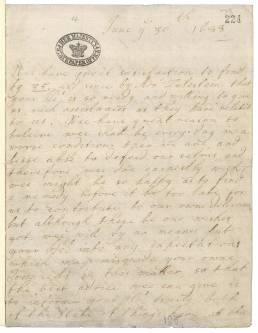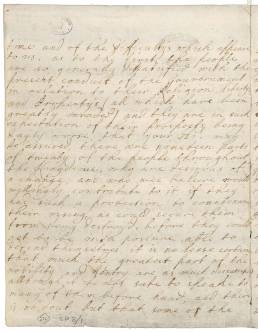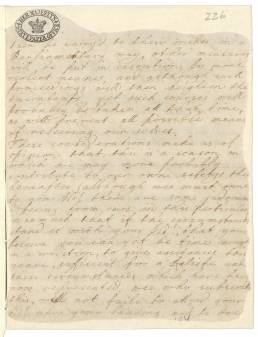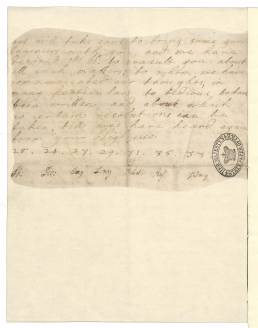What led To the Invitation to Invade?
William Prince of Orange was recognised as the leader of the Protestant cause in Europe. Today there are those who would cast the conflict purely in terms of opposing the advance of France and as a purely political conflict with William leading a coalition of anti-French forces including the Pope, it is clear that contemporaries saw this very much as a religious war. For many in William’s ranks and indeed since he was well aware of the brutality against French Protestants or Huguenots in his own family principality of Orange, the war they were engaged in was for the defence and very survival of the Protestant faith. Secondary to that faith was the political and civil freedoms which flowed from it and were guaranteed by states whose government were Protestant.
Nowhere was this more clear than in England, where a nation watched in horror as they saw the twin evils of Catholicism and Absolutism personified in the reigning monarch James II. As he emulated Louis of France in faith and political practice many in England realised now was the time to act. They looked to the one man in Europe capable of delivering them from the future they saw developing. The Invitation to William was a letter sent by seven notable Englishmen, later named the Immortal Seven, to William III, Prince of Orange, received by him on 30 June 1688 (Julian calendar, 10 July Gregorian calendar). In England a Catholic male heir to the throne, James Francis Edward Stuart, had been born, and the letter asked William to force the ruling king, his uncle and father-in-law James II of England, by military intervention to make William’s Protestant wife Mary, James’s eldest daughter, heir, on the grounds that newborn Prince of Wales was allegedly an impostor.
The letter informed William that if he were to land in England with a small army, the signatories and their allies would rise up and support him. The Invitation briefly rehashed the grievances against King James, claimed that the King’s son was supposititious (fraudulent) and that the English people generally believed him to be so, deplored that William had sent a letter to James congratulating him with the birth of his son and offered some brief strategy on the logistics of the proposed landing of troops. It was carried to William in The Hague by Rear Admiral Arthur Herbert (the later Lord Torrington) disguised as a common sailor, and identified by a secret code.
The invitation convinced William to carry out his existing plans to land with a large Dutch army, culminating in the Glorious Revolution during which James was deposed and replaced by William and Mary as joint rulers. William and Mary had already in April of that year, when William had started to assemble an invasion force, asked for such an invitation to be given, within the context of a secret correspondence since April 1687 between them and several leading English politicians, discussing how best to counter the pro-Catholic policies of James
Who were the Immortal Seven?
Immortal seven (act. 1688), was a disparate group of English notables comprising William Cavendish, fourth earl of Devonshire, Henry Compton, bishop of London, Richard Lumley, Baron Lumley, Thomas Osborne, first earl of Danby, Edward Russell, Henry Sidney, and Charles Talbot, twelfth earl of Shrewsbury, who on 30 June 1688—probably at Shrewsbury’s London residence—attached their ciphers to an invitation to William of Orange, stadholder of the Netherlands, to invade England. This extraordinary event was motivated by the bitter resentment the seven identified concerning the extent to which the reigning monarch, James II, had ‘greatly invaded’ his subjects’ ‘religion, liberties and properties’ (Browning, 120). The invitation was a direct response to William’s demand for such a document before he would undertake an invasion.
The invitation’s timing was highly significant. William had, by letters and personal envoys, cultivated a number of English politicians for more than a year and the spring of 1688 had seen an intensifying conspiracy. But the summer saw a dramatic shift in Stuart political life. On 10 June the birth of a son to James II and his second wife, Mary of Modena, opened up the prospect of a Roman Catholic succession in perpetuity. Previously James’s increasingly extreme attempts to force through his pro-Catholic agenda were widely seen by protestants as odious, but likely to be undone by the king’s death: James was fifty-four in June 1688, the age at which his brother Charles II had died in February 1685. With the birth of an heir, Jesuits could now surround the cradle of the future king, and the anticipated succession of a protestant heir in the form of James’s daughter Mary, William’s wife, would not take place.
The more immediate context for the invitation was the acquittal on 30 June of seven bishops (William Sancroft, Thomas Ken, John Lake, William Lloyd, Jonathan Trelawny, Francis Turner, and Thomas White) who had been imprisoned for refusing to obey James’s demand that his declaration of indulgence, granting religious toleration, be read from Church of England pulpits and then, allegedly, for publishing their disobedience. The jubilant celebrations attendant on this great setback for James’sRomanizing policies lent superficial credibility to the efforts of the ‘immortal seven’ to convince William that ‘there are nineteen parts of twenty of the people throughout the kingdom who are desirous of a change’ (Browning, 120). All that was needed was ‘a protection to countenance their rising as would secure them from being destroyed before they could get to be in a posture to defend themselves’, in other words a Dutch invasion led by William. The invitation was thus in effect an association in which those involved pledged mutual assistance in the event of an armed rising.
What bound the ‘immortal seven’ together? Certain links may be discerned between two or more members of the group. Earlier in his career Compton had received powerful patronage from Danby when the latter was Charles II’s lord treasurer. Danby, Lumley, and Devonshire all held or would soon hold significant administrative responsibilities or landed power in the north of England. Lumley and Shrewsbury were converts from the Roman Catholicism of their youth. Russell and Sidney were brothers of whig conspirators executed for their part in the Rye House plot of 1683 [see Rye House plotters]; both had also held military commands, Russell in the navy, Sidney in the army. In negative terms, Devonshire had repeatedly attempted to have Danbyimpeached in parliament during the 1670s. But, as this conflict suggests, there was little political or personal unity across the group as a whole. Indeed this disunity was often a source of approbatory comment in older histories since it showed patriotic English whigs and tories briefly standing united against incipient European-style Catholic despotism. The only common factor among the ‘immortal seven’ was deep disenchantment with the government of James II, and in many cases personal pique against the man James Stuart.
Why did only seven men attach their ciphers to the invitation? This was unlikely to have been a premeditated strategy in the same vein as the declaration by the seven bishops. In that instance the biblical resonances ( Revelation 1: 20) of the number seven were hugely important to the collective self-image of the clerical group and to its vigorous iconographical representation. Two issues were probably of central importance. First, other potential conspirators—notably Daniel Finch, second earl of Nottingham, and George Savile, first marquess of Halifax—refused to become firmly engaged. The high Anglican Nottingham was eventually overcome with scruples of conscience and, after seeking guidance from clerics, withdrew from the conspiracy since he feared to ‘doe Evil that good may come of itt’, not least as ‘the next step would be high treason’ (Horwitz, 52). Nottingham may subsequently have escaped assassination by some of the remaining conspirators only as a result of the advocacy of Danby. Halifax was burdened less by conscience than by caution, inspired by a deep-seated belief that James’s regime was doomed anyway: the task of restoring Catholicism to England was too complicated and difficult for government to achieve, even after the birth of a male heir. As he argued in a no doubt highly unwelcome letter to William on 12 April 1688, ‘the great thing to bee done now, is to do nothing’ (Foxcroft, 1.496). Second, the conspirators were anxious that widening the scope of the conspiracy would increase the risk of discovery and retribution. Overall, it seems likely that the full truth of the genesis and course of the conspiracy will never now be known, thanks to the inevitably shadowy nature of its existence and consequent sketchiness of the records.
How important was the invitation? Here a distinction needs to be made between the practical ineffectiveness of the ‘immortal seven’ and the crucial overall symbolism of the invitation itself. William’s lack of confidence in the conspirators’ military usefulness may be deduced from the fact that instead of landing his invasion fleet in the north of England—where Danby and Devonshire in particular were significant local figures—he chose the far south-west. His decision was no doubt partially influenced by an awareness that James expected an invasion to land in the north, and had deployed his fleet accordingly. But William’s choice of the west country—which had been brutally punished by James’s regime for supporting the rebellion in 1685 of Charles II’sillegitimate son James Scott, duke of Monmouth—was so strategically risky that it also suggests a deep contempt for English military capabilities.
The verdict of Thomas Macaulay, that the invitation was ‘an instrument scarcely less important to the liberties of England than the Great Charter’ (Macaulay, 3.1041), may now reek of ‘whig’ bias. Even so, the role of the ‘immortal seven’ should not be wholly dismissed. Their invitation represented an important fig-leaf of legitimacy for an invasion that William already badly wanted to effect, and a reassurance that some Englishmen at least would rally to it. Furthermore, although in the course of emphasizing the European context of events Jonathan Scott has recently argued that William’s ‘invasion can no longer credibly be regarded as the response to an invitation by seven English people’ (Scott, 459), the mystery that surrounded the invitation unnerved the Stuart regime. William’s reference to having been invited by ‘a great many lords, both spiritual and temporal, and by many gentlemen, and other subjects of all ranks’ in his declaration of 10 October 1688 (Williams, 15) enraged and deeply troubled James. Direct royal interrogation about whether he had signed such an invitation forced Bishop Compton into a breathtakingly casuistical reply (Bodl. Oxf., MS Tanner 28, fol. 227). Most of his colleagues on the episcopal bench dragged their feet in the face of repeated requests from James both for public denials that they had been a party to it, and, crucially, for a public abhorrence of William’s declared intention to invade (Gutch, 1.427–34). More generally, several contemporary pamphlets vigorously discussed the reality of an invitation by spiritual and temporal peers, and—at least as significantly—whether it was within the right of peers to issue such a document. As such discussions suggest, since the invitation was not printed in 1688 it remained a matter of conjecture and controversy.
Did their status as signatories have an important impact on the later careers of the ‘immortal seven’? In Compton’s case it has been speculated that William and Mary may actually have counted his involvement against him: he failed to be raised to the archbishopric of Canterbury in 1691, resulting in a lengthy ‘private sulk’ (E. F. Carpenter, The Protestant Bishop, 1956, 174). The other signatories gained promotions within the peerage at different points in the 1690s: Lumley in 1690, Cavendish, Osborne, Sidney, and Talbot in 1694, and Russell in 1697. They also garnered an impressive haul of offices. Nevertheless, there remained an absence of anything like a recognizable group identity. When the crisis of 1688 had passed, the ‘immortal seven’s’ lack of political or religious coherence reasserted itself and the shock felt by some of them—notably Danby—about the unexpected change of monarch must have militated against public discussion of the invitation by those who had been most involved.
When was the term ‘immortal seven’ first coined, and how influential has the concept been in subsequent historiography? Lacking precise knowledge of and access to the text of the invitation, the principal historians of the early to mid-eighteenth century—Laurence Echard, White Kennett, John Oldmixon, James Ralph, and David Hume—tended to provide extensive lists of those disaffected to James’s government, rather than a set number of seven chief conspirators. The first published reference to the group probably came from the lawyer and historian Sir John Dalrymple, ‘an interesting but minor member of the Scottish literati’ (Oxford DNB) in 1773: ‘Immortal seven! whose memories Britain can never sufficiently revere’ (Dalrymple, vol. 3, appx 1, 135). As might be expected, this gloss was offered on the text of the invitation, which Dalrymple seems to have been the first to publish.
The subsequent use of ‘immortal seven’ has been considerably more limited than might be expected, perhaps partially justifying the recent claim that Dalrymple’sMemoirs were ‘a damp squib’, and merely ‘a traditional whig attempt to unlock the hidden secrets of the revolution of 1688 with new documentation’ (Oxford DNB). The phrase does not appear in such influential older works of whig history as Hallam’sConstitutional History, Macaulay’s History of England, Trevelyan’s England under the Stuarts or The English Revolution, 1688–1689 (the latter produced to mark the 250th anniversary of the revolution), or Churchill’s History of the English-Speaking Peoples. It has also failed to register in a number of substantial general accounts of the seventeenth century, including Christopher Hill’s Century of Revolution, Barry Coward’sThe Stuart Age, or either of the relevant volumes of the old or new Oxford History of England (by G. N. Clark and Julian Hoppit respectively). It has, however, received mention in many other works, albeit often in deliberately placed quotation marks to indicate the unfashionable nature of the phrase. The term may now be enjoying something of a minor renaissance in leading synoptic accounts—for example, by Mark Kishlansky, David L. Smith, and Tim Harris. Nevertheless, J. R. Jones has provided the sole extensive modern treatment of the invitation and those involved, and even he points to the key importance in the revolution of just four men, only one of whom—Sidney—was a member of the ‘immortal seven’ (the others were William’s Dutch confidantes Everard van Dijkvelt, William Frederick Nassau van Zuylestein, and Hans Willem Bentinck; Jones, 222–3). Scholarly fashions have undoubtedly contributed to the limited use of ‘immortal seven’ by recent historians. The strongly English context of the men involved means that they do not resonate with scholars pursuing the ‘new British history’, and the phrase’s inherently whig character is hardly conducive to studies placing seventeenth-century English history in a firmly European context of rival dynasts and confessional groups.
Sources
-
Bodl. Oxf., MS Tanner 28
-
‘An answer to a paper intitled reflections on the prince of Orange’s declaration’, A collection of papers relating to the present juncture of affairs in England (1688)
-
‘The speech of the prince of Orange, to some principle gentlemen of Somersetshire and Dorsetshire, on their coming to join his highness at Exeter the 15th of Nov 1688’, A collection of papers relating to the present juncture of affairs in England (1688)
-
‘A protestant precedent offer’d to the bishops for the exclusion of K. James the second’, A collection of papers relating to the present juncture of affairs in England (1688)
-
The prince of Orange his declaration: shewing the reasons why he invades England, with a preface and some modest remarks on it (1688)
-
[T. Harrison], Political aphorisms, or, The true maxims of government displayed (1690)
-
J. Dalrymple, Memoirs of Great Britain and Ireland from the dissolution of the last parliament of Charles II until the sea-battle off La Hogue, 3 vols. (1771–3)
-
J. Gutch, ed., Collectanea curiosa, 2 vols. (1781)
-
English historical documents, 8, ed. A. Browning (1953)
-
E. N. Williams, The eighteenth-century constitution, 1688-1815 (1965)
-
CSP dom., June 1687 – Feb 1689
-
L. Echard, The history of England, 3 vols. (1707–18)
-
W. Kennett, The complete history of England, 2nd edn, 3 vols. (1719)
-
J. Oldmixon, The history of England during the reigns of the royal house of Stuart (1730)
-
J. Ralph, The history of England: during the reigns of K. William, Q. Anne and K. George I, 2 vols. (1744–6)
-
D. Hume, The history of England, 2 vols. (1757)
-
H. Hallam, The constitutional history of England from the accession of Henry VII to the death of George II, later edn, 2 vols. (1879)
-
The life and letters of Sir George Savile … first marquis of Halifax, ed. H. C. Foxcroft, 2 vols. (1898)
-
T. B. Macaulay, The history of England from the accession of James II, new edn, ed. C. H. Firth, 6 vols. (1913–15)
-
G. M. Trevelyan, England under the Stuarts (1903)
-
G. N. Clark, The later Stuarts, 1660–1714 (1934)
-
G. M. Trevelyan, The English revolution, 1688–1689 (1938)
-
W. S. Churchill, A history of the English-speaking peoples, 4 vols. (1956–8)
-
D. Ogg, England in the reigns of James II and William III (1955)
-
C. Hill, The century of revolution (1961)
-
J. Kenyon, The nobility in the revolution of 1688 (1963)
-
H. Horwitz, Revolution politicks: the career of Daniel Finch, second earl of Nottingham, 1647–1730(1968)
-
J. Carswell, The descent on England: a study of the English revolution of 1688 and its European background (1969)
-
J. R. Jones, The revolution of 1688 in England (1972)
-
W. A. Speck, Reluctant revolutionaries: Englishmen and the revolution of 1688 (1988)
-
B. Coward, The Stuart age: England, 1603–1714, 2nd edn (1994)
-
M. Kishlansky, A monarchy transformed: Britain, 1603–1714 (1996)
-
D. L. Smith, A history of the modern British Isles, 1603–1707 (1998)
-
J. Hoppit, A land of liberty? England, 1689–1727 (2000)
-
J. Scott, England’s troubles: seventeenth-century English political instability in European context(2000)
-
T. Harris, Revolution: the great crisis of the British monarchy, 1685–1720 (2006)
See also
- Cavendish, William, first duke of Devonshire (1641–1707), politician
- Compton, Henry (1631/2–1713), bishop of London
- Lumley, Richard, first earl of Scarbrough (1650–1721), politician
- Osborne, Thomas, first duke of Leeds (1632–1712), politician
- Russell, Edward, earl of Orford (1652–1727), naval officer
- Sidney, Henry, first earl of Romney (1641–1704), politician and army officer
- Talbot, Charles, duke of Shrewsbury (1660–1718), politician
- Rye House plotters (act. 1683)




